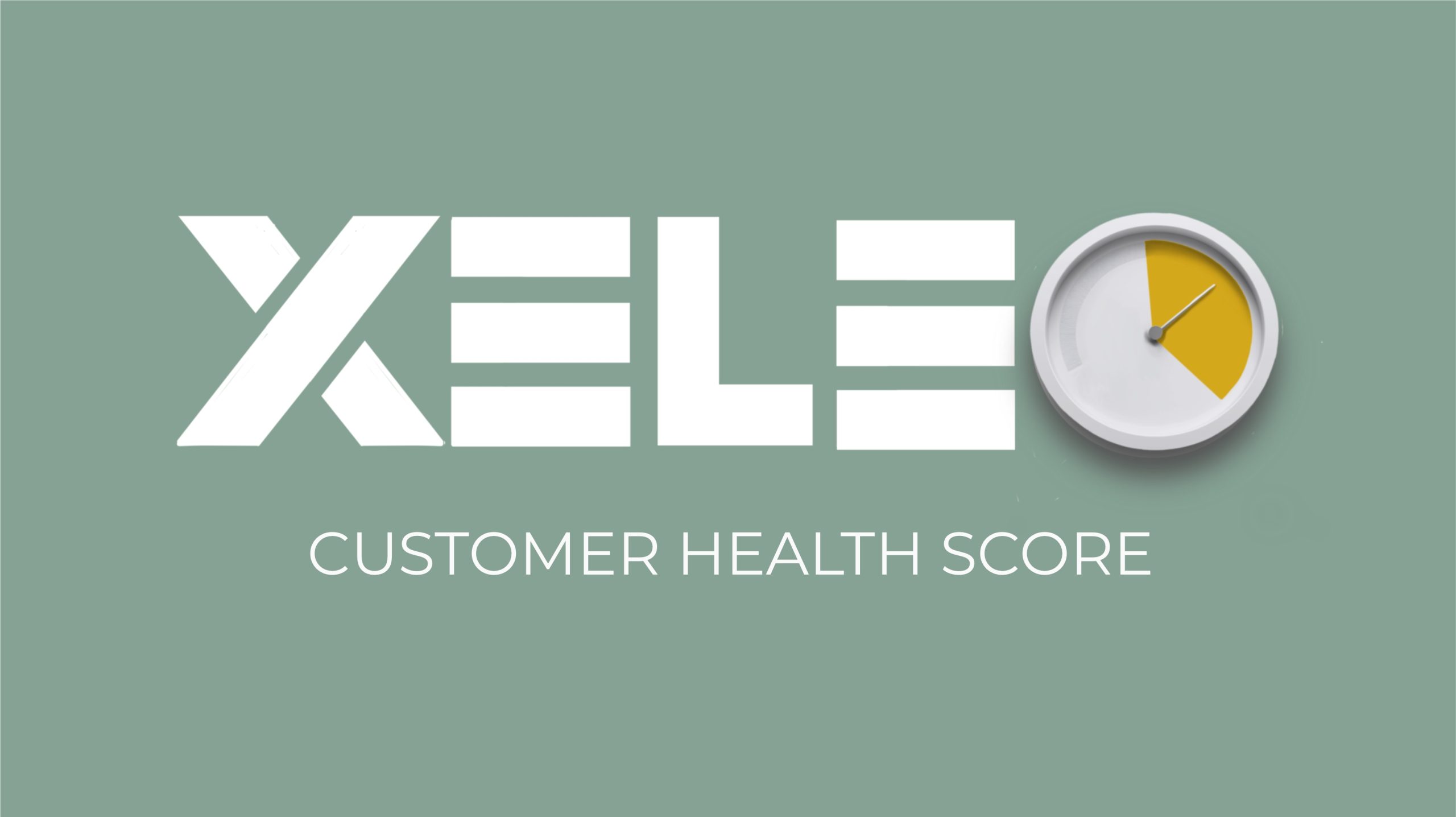![]()

Customer Health Score – The Key Metric for Sustainable Customer Retention
A strong customer relationship is essential for long-term business success. But how can you make the state of your customer relationships measurable and transparent? The answer lies in a central metric: the Customer Health Score (CHS).
- What Is a Customer Health Score?
- Why Is the Customer Health Score Crucial?
- How to Calculate the CHS
- How to Effectively Implement CHS – Step-By-Step
- XELEO – Your Partner for Efficient CHS Strategy
WHAT IS A CUSTOMER HEALTH SCORE?
A Customer Health Score is a metric used to measure how likely customers are to stay, renew, or expand their relationship with your business. The score combines essential indicators reflecting the health of a customer relationship, including:
- Product Usage: Frequency of logins and utilized features.
- Customer Engagement: Interactions like support requests and marketing email open rates.
- Customer Satisfaction: Net Promoter Score (NPS) and Customer Satisfaction Score (CSAT).
CHS provides a clear overview, enabling companies to proactively address customer needs before churn becomes an issue.
WHY IS THE CUSTOMER HEALTH SCORE CRUCIAL?
A well-implemented CHS positively impacts various areas of business success:
- Early Churn Prevention: Identify dissatisfied customers early to intervene effectively.
- Upselling and Cross-Selling Opportunities: Customers with high scores show greater willingness to expand or add services.
- Enhanced Customer Satisfaction: Targeted analyses uncover opportunities for improvements and allow focused optimizations.
- Clear Process Optimization: Low scores in certain areas clearly indicate actionable improvements.
Practical Example: How Effective Customer Service Increases the CHS
One of our customers offers charging stations for electric vehicles (EV). Recently, a caller had a problem with one of the charging stations and contacted the company’s customer service team. XELEO’s support team quickly answered the call and immediatly resolved the issue, demonstrating exceptional responsiveness, clear communication and personalised support. This positive experience significantly increased the customer’s satisfaction and directly increased their Customer Health Score.
As a result, this caller, despite having accounts with multiple charging providers, now consciously chooses this particular provider whenever possible. The combination of proactive customer service and timely issue resolution has not only significantly improved the customer’s CHS, but also strengthened brand loyalty. Consequently, the company benefits from higher customer retention, higher frequency of use and greater potential for upselling additional services
This real-life scenario clearly demonstrates how excellent customer service directly correlates with a better Customer Health Score, which promotes sustainable customer relationships and long-term business success.
HOW TO CALCULATE THE CHS
An effective Customer Health Score helps businesses quickly assess customer retention potential by combining several customizable metrics. Core metrics typically include, but are not limited to:
| Component | Example Data |
| Product Usage | Logins, utilized features |
| Customer Satisfaction | PS scores, CSAT surveys, FCR-Rate |
| Support Interactions | Ticket volume, resolution time |
| Renewal Potential | Contract status, payment behavior |
Businesses can select, add, or adjust these metrics depending on their industry, customer lifecycle stage, and organizational goals.
Each metric should be normalized to a 0–100 scale, where higher scores always reflect positive outcomes (e.g., high satisfaction or low support issues). Assign weights based on the metric’s strategic importance to your business, ensuring they sum to 100%. For example:
| Component | Customer Score (0–100) | Weighting | Calculation | Weighted Score |
| Product Usage | 90 | 40% | 90 x 0,4 = | 36 |
| Customer Satisfaction | 85 | 25% | 85 x 0,25 = | 21,25 |
| Support Interactions | 80 | 20% | 80 x 0,2 = | 16 |
| Renewal Potential | 95 | 15% | 95 x 0,15 = | 14,25 |
| Total | 87,50/100 |
You can then interpret your result as follows:
- 80–100: Healthy; low churn risk
- 60–79: Moderate; requires attention
- Below 60: Unhealthy; immediate intervention needed
HOW TO EFFECTIVELY IMPLEMENT CHS – STEP-BY-STEP
1. Define Objectives
To efficiently implement a CHS, companies should start by clearly defining their business objectives, such as reducing churn or increasing revenue. It’s essential to involve diverse teams like customer service, sales, and marketing early on to ensure alignment across all departments.
2. Identify Core Metrics
Next, identify the core metrics that best reflect customer health. These should include quantitative metrics like feature usage and support tickets, as well as qualitative feedback like customer satisfaction surveys. Assigning appropriate weightings to each metric based on their relevance to your objectives is essential.
3. Develop the Scoring Model
Once metrics and weightings are set, develop your scoring model. You might choose a numerical scale (e.g., 0–100) or a visual Red-Yellow-Green system. Validate your scoring model using historical data to ensure accuracy.
4. Automate Implementation
Automation is critical for effectively implementing your CHS. Integrate CRM and customer service tools, such as Gainsight or Salesforce, and set up real-time dashboards and automated alerts. This ensures immediate response capability when scores indicate potential risks.
5. Train Your Teams
Training your internal teams is equally important. Provide your employees with intervention playbooks and education on upselling strategies to maximize the benefits of the CHS system.
6. Pilot and Gather Feedback
Before a full rollout, pilot your CHS with a select customer group. Gather feedback, refine the scoring weights, and continuously monitor outcomes.
7. Continuous Optimization
Finally, engage in ongoing optimization by adjusting the CHS in response to market shifts and integrating AI analytics to foresee customer needs proactively.
XELEO – YOUR PARTNER FOR EFFICIENT CHS STRATEGY
XELEO supports companies as an experienced customer service center, helping implement Customer Health Score through real-time data integration and proactive customer retention strategies. XELEO’s service ensures short response times, personalized interactions, and continuous optimization of your customer health scoring system.
A Customer Health Score is more than just a number – it is the key to sustainable customer retention, higher revenues, and proactive customer relationships.
Contact us now using our contact form or call +43 2742/28520 to start today with a proactive customer strategy – for sustainable growth and long-term success.



